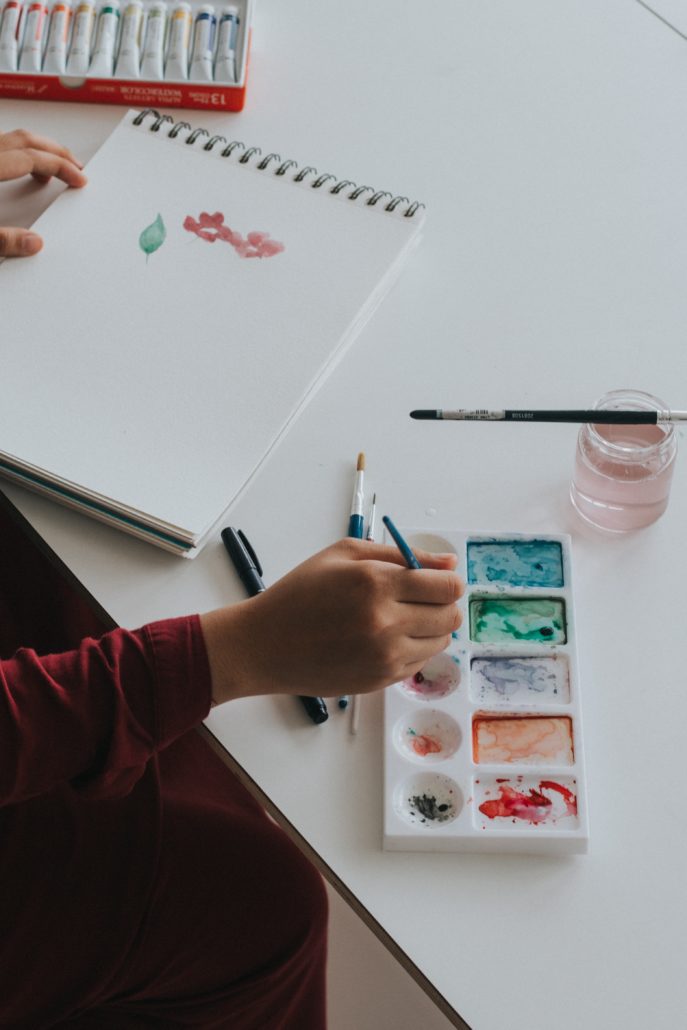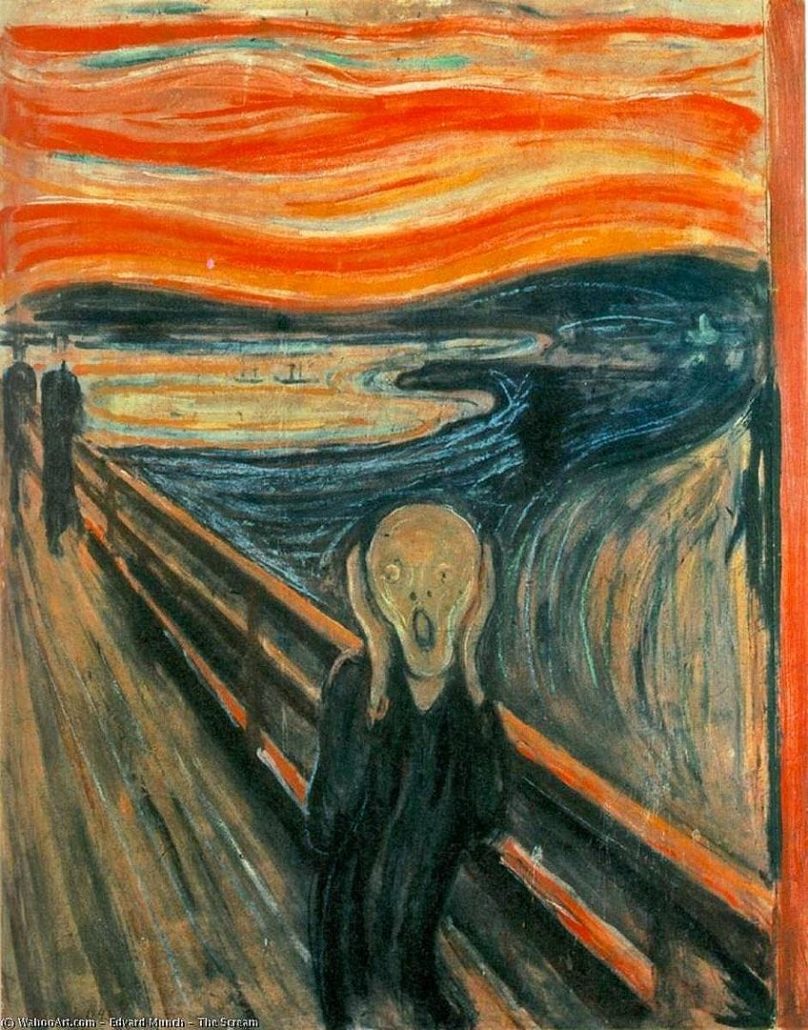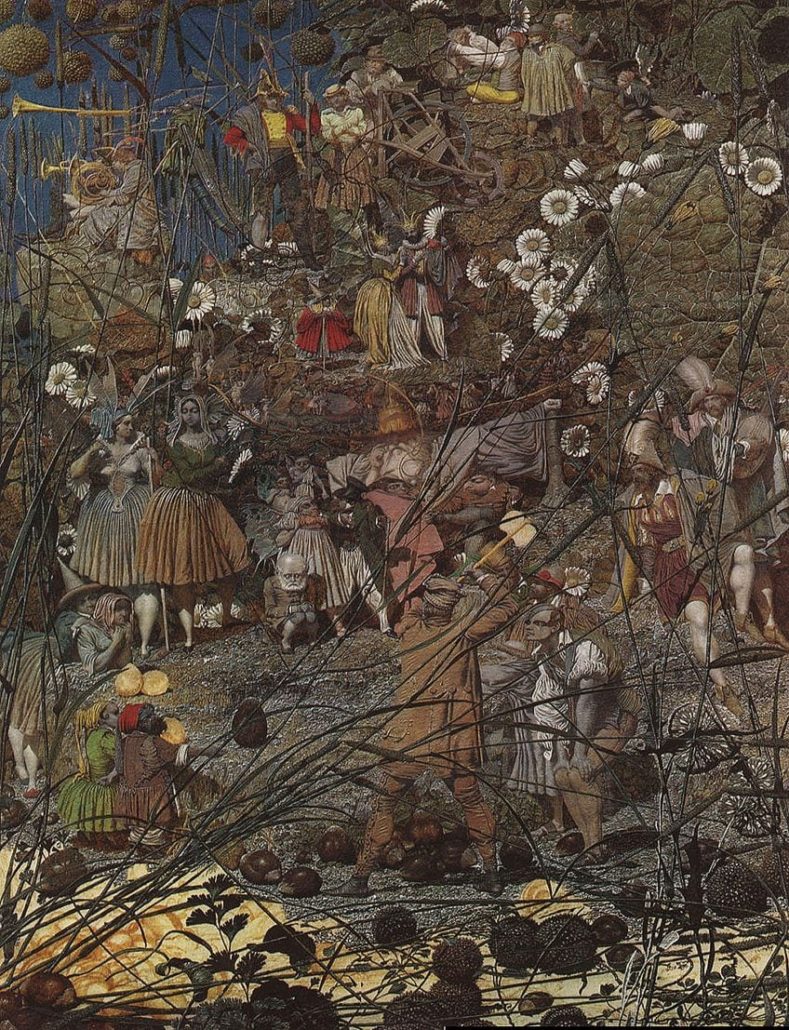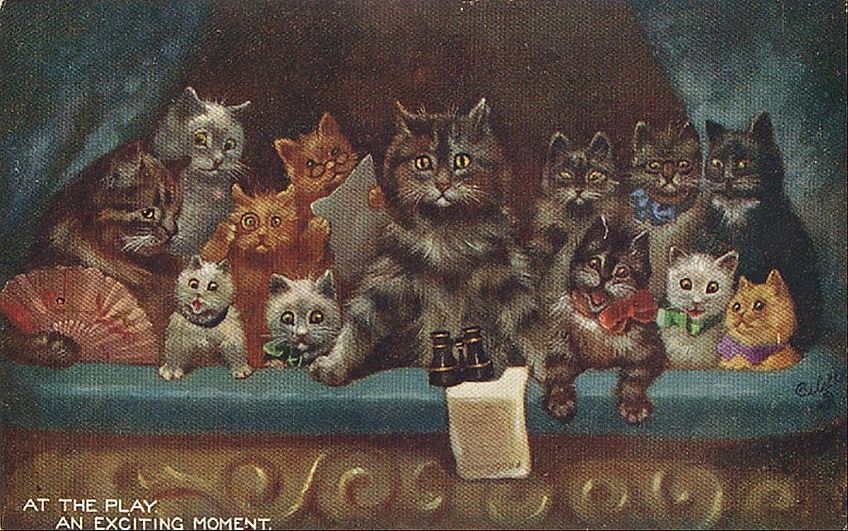Art Schizophrenia
Schizophrenia affects 0.3% of the world’s population and is a complex and frequently misunderstood mental condition. For those who experience both the good and negative symptoms of schizophrenia, making art can be therapeutic. Many well-known artists have struggled with schizophrenia throughout their lives, and while the art they create can occasionally be horrifying to an outsider (schizophrenia outsider art), there is much beauty to be discovered in their ability to draw from their suffering.
Schizophrenia sufferers must contend with both their own inner demons and external demonization. Schizophrenia is perhaps the most prevalent mental illness. People with schizophrenia are frequently portrayed in film and in popular media as dangerous, insane, and delusional. We must first accurately describe schizophrenia before we can talk about how it relates to art.
Although hallucinations are the schizophrenia symptom that is most frequently discussed, they are neither the sole nor the most harmful one. Positive and negative symptoms are two different categories of schizophrenia symptoms. Positive symptoms include hallucinations, inflated perceptions, mania, and delusions. Positive symptoms are events that do not occur in neurotypical people. The following symptoms, among others, are added to the typical experience:
- Delusions or false beliefs about the world
- Visual, auditory, or tactile hallucinations
- Agitated movements of the body
- Inappropriate emotions for the context
- Strange plans and ideas
- Psychosis or a break with reality
In contrast, negative symptoms are the absence of a symptom that neurotypical persons take for granted. Negative symptoms, which might be physical or mental, are frequently the most harmful aspects of schizophrenia. Schizophrenia’s detrimental mental effects include:
Skip To:
- Art Schizophrenia
- Schizophrenia Fact Sheet
- Schizophrenia Statistics
- The Benefits of Art Therapy Schizophrenia
- Schizophrenia and Art – Art Schizophrenia Drawings and Pieces
- Famous Artists with Schizophrenia
- Paranoid Schizophrenia Art
- Schizophrenia Louis Wain Art
- Schizophrenia Treatment
- Schizophrenia and Co-occurring Issues
- We Level Up Dual Diagnosis Treatment Center
Learn More:
- Anhedonia or the inability to experience or express any pleasure
- Avolition or an absolute lack of motivation
- Lack of speech
- Inability to act spontaneously
- Lack of interest in the world
- Social withdrawal
- Alogia or difficulty with speaking as a result of disorganized thinking
Some negative physical symptoms are:
- Flat affect or lack of emotional display on the face
- Lack of gesturing with communication
- Physical inactivity
- Monosyllabic and monotone speech
- Lack of eye contact
I hope it is clear to you that schizophrenia is much more than just having hallucinations. The uncomfortable symptoms that interfere with daily activities are frequently the most harmful ones. Other mental diseases like anxiety, depression, and frequent substance abuse as a coping mechanism can exacerbate schizophrenia.

Get Help. Get Better. Get Your Life Back.
Searching for Accredited Dual Diagnosis Mental Health Centers Near You?
Even if therapy failed previously, or are in the middle of a difficult crisis, we stand ready to support you. Our trusted behavioral health specialists will not give up on you. When you feel ready or just want someone to speak to about counseling alternatives to change your life call us. Even if we cannot assist you, we will lead you to wherever you can get support. There is no obligation. Call our hotline today.
FREE 24/7 Dual Diagnosis Mental Health Services HotlineSchizophrenia Fact Sheet
Schizophrenia Overview
A condition that impairs a person’s capacity for clear thought, feeling, and behavior.
Although the precise origin of schizophrenia is unknown, it is thought that a mix of genetics, environment and altered brain chemistry and structure may be at play.
Schizophrenia is characterized by disorganized speech or behavior, depressed participation in daily tasks, and ideas or experiences that appear disconnected from reality. Memory loss and attention problems could also be present.
Treatment is typically ongoing and frequently consists of a mix of prescription drugs, psychotherapy, and well-coordinated specialty care services.
Schizophrenia Symptoms
Schizophrenia is characterized by disorganized speech or behavior, depressed participation in daily tasks, and ideas or experiences that appear disconnected from reality. Memory loss and attention problems could also be present.
Schizophrenia Treatments
Treatment is typically ongoing and frequently consists of a mix of prescription drugs, psychotherapy, and well-coordinated specialty care services.
Schizophrenia Statistics
A mental disorder called schizophrenia is characterized by disturbances in thought, perception, emotional responsiveness, and social interactions. Although each person’s experience with schizophrenia is unique, the condition is typically chronic and can be both severe and incapacitating.
4.9%
With the risk being highest in the early stages of the illness, an estimated 4.9% of people with schizophrenia commit suicide, a rate that is significantly higher than that of the general population.
Source: National Insitute Of Mental Health
24 Million
Around 24 million people, or 1 in 300 persons (0.32%), globally suffer from schizophrenia. Adults at this rate make up 1 in 222 individuals (0.45%). It does not occur as frequently as many other mental illnesses.
Source: World Health Organization
50%
The great majority of people with schizophrenia do not currently have access to mental health services. An estimated 50% of patients in psychiatric hospitals have a diagnosis of schizophrenia.
Source: World Health Organization
Schizophrenia Art: The Benefits of Art Therapy Schizophrenia

Talk therapy can be challenging and unproductive on its own due to the communication difficulties brought on by some of schizophrenia’s unpleasant symptoms. The most common form of treatment is anti-psychotic medicine, however, all symptoms cannot be completely eliminated. Alongside conventional anti-psychotic pharmacological therapies, schizophrenia art therapy is gaining popularity.
How Does Art Therapy Work? Schizophrenia Art
Art therapy for schizophrenia can take numerous forms, but it frequently takes place in a group environment. A therapist will create a setting where clients can express themselves artistically through writing, sculpting, or drawing. This kind of intervention has a dual therapeutic purpose.
In order to learn more about the patient’s inner experiences, the therapist can first use their creation in subsequent talk therapy sessions. Second, for schizophrenic patients, in particular, using their hands to create can be a useful calming technique. Many turn to drawing or painting to translate their pleasant symptoms (hallucinations) onto paper, which can make them appear less overwhelming.
Traditional treatments are frequently rejected by people with very severe schizophrenia, and the negative symptoms of lack of drive and affect (feeling) might lead them to social isolation. Schizophrenic individuals can explore and communicate their feelings via art in a non-confrontational way that they would not be able to do with a therapist. They can overcome their issues with social interaction and boost their self-esteem in the group environment.
Even those who are experiencing active psychosis or a loss of reality can gain benefits from art therapy. Schizophrenic art is a viable therapeutic approach despite the fact that patients with psychotic attacks sometimes have great difficulty verbalizing their experiences due to cognitive deficits and aberrant thought patterns.

End the Emotional Pain. Get Your Life Back.
Feeling Depressed, Anxious or Struggling with Mental Health Illness? Get Safe Comfortable Mental Health Dual Diagnosis High-Quality Therapy From Counselors That Care. Begin Your Recovery Now.
Hotline (855) 940-6125Schizophrenia and Art – Art Schizophrenia Drawings and Pieces
A difficult mental environment and creative expression go hand in hand rather frequently. Is it because creative expression is one of the simplest ways to communicate, or does disturbed mental health just come with creativity?
We can’t assume anything, but we can respect those who have battled through traumatic and challenging mental circumstances to create some of the most fascinating and thought-provoking works of schizophrenic art. Drawings done by individuals with mental illness teach us a lot.
Famous Artists with Schizophrenia
Schizophrenia Art: Camille Claudel (1864-1943) (Art Visual Schizophrenia)
Even though Camille Claudel had the potential to be an amazing artist in her own right, she destroyed a lot of her original works while suffering from severe schizophrenia illness. Schizophrenia has a high heredity, and Claudel’s hereditary characteristics caused her to fall into mental illness after her passionate affair with Auguste Rodin went terribly wrong.

Prior to her psychotic break, Claudel made a considerable contribution to Rodin’s artistic output for many years. However, after her break, she began to accuse Rodin of stealing. These charges might not have been wholly unfounded.
Although many of her acquaintances did not think it was necessary, Claudel spent a large portion of her life locked in an asylum. The way Claudel’s care was managed was inadequate, despite the fact that schizophrenia is not a death sentence. Even though they requested that the staff not send the letters she wrote to them, her family never came to visit her. Claudel passed away in the asylum at the age of 78. We could have seen so much more from this gifted artist if the people around her had been more kind and more understanding.

Schizophrenia Art: Edvard Munch (1863-1944)
Munch shared Claudel’s genetic and environmental predispositions to mental disease, particularly schizophrenia. Munch’s father suffered from depression, one of his sisters had schizophrenia, and his mother and other sister had both passed away from tuberculosis when he was a little child. “I can’t get rid of my ailments because so much of my art depends on them”, the painter once said. When we consider some of his most well-known works, such as The Scream, we can fully appreciate this sentiment.
Munch was enrolled in a mental hospital in 1908 after experiencing a psychotic episode that was made worse by booze. Munch was later identified as having neurasthenia, a clinical disorder that is strongly related to hysteria and hypochondria. Munch endured persecution at the hands of the Nazi regime in addition to having to battle his own inner demons. In 1937, Munch’s artwork was classified as “degenerate art” by Hilter’s administration, which also seized several of his pieces.
The Scream is unquestionably Munch’s most well-known piece of art and most likely the most well-known example of psychotic art. We also think that Munch’s account of his struggles with schizophrenia is perfectly captured in this picture. This image in particular is evidence of his conviction that his art would not be the same without his ailments. There are various ways to interpret this image, and some people think the figure reflects the anxiety of contemporary man.
Munch himself recalls going for a walk with two friends during which the sky abruptly became blood red, he shivered in agony and fear, and he believed that the world was echoing with the sound of his scream. This work of art is without a doubt one of the most well-known examples of schizophrenia and dark schizophrenia art.
First-class Facilities & Amenities
World-class High-Quality Mental Health Services & Behavioral Health Substance Abuse Treatment
Rehab Centers TourRenowned Mental Health Centers. Serene Private Facilities. Inpatient Rehab Programs Vary.
Mental Health Helpline (855) 940-6125Proven recovery success experience, backed by a Team w/ History of:
15+
Years of Unified Experience
100s
5-Star Reviews Across Our Centers
10K
Recovery Successes
- Comprehensive Dual-Diagnosis Treatment
- Complimentary Family & Alumni Programs
- Coaching, Recovery & Development Events
- Comfortable Onsite Medical Detox Center
Paranoid Schizophrenia Art
Schizophrenia Art: Richard Dadd (1817-1886)
Richard Dadd lived a large portion of his life in mental institutions. Dadd’s schizophrenia initially showed symptoms during a ten-month excursion in his mid-twenties. Dadd started to have hallucinations at this point and got more hostile and angry with others around him. He also made threats to kill the pope. After his return, the illusions took over. In addition to changing his habits and nutrition, Dadd’s speech was difficult for many people to comprehend.
Following a diagnosis of “aberration of the intellect,” doctors advised Dadd’s father that he would benefit from receiving psychiatric treatment. Dadd killed his father with a knife while taking a stroll in the park after his father turned down the care. Dadd then spent forty years in two of England’s most infamous mental institutions. As a result of emotional trauma, Dadd’s condition rapidly deteriorated, the delusions got worse, and he was identified as having homicidal monomania. We now understand that Dadd had paranoid schizophrenia.
Dadd, regrettably, lived in an era before antipsychotic drugs and compassionate schizophrenia treatments were accessible. He committed his life to art despite being ill. Dadd spent nine years working on the schizophrenia painting Fairy Feller, adding so much paint that the canvas now appears three-dimensional. Dadd deserves to be recognized for his magnificent schizophrenic paintings, despite how ill he was and despite the lack of care or understanding.

World-class, Accredited, 5-Star Reviewed, Effective Mental Health Dual Diagnosis Programs. Complete Integrated Inpatient Rehab with Free Post Discharge Therapy Planning.
CALL (855) 940-6125End the Emotional Pain Rollercoaster. Gain Stability & Happiness Through Recovery Treatment. Start Mental Health Counseling Today. Get Free No-obligation Guidance by Behaviroal Health Specialists Who Understand Mental Health Recovery.
Schizophrenia Louis Wain Art

Schizophrenia Art: Louis Wain (1860-1939)
As we’ve seen with the artists mentioned above, schizophrenia often develops throughout the course of an individual’s adult life. In the instance of English illustrator Louis Wain, his mental health didn’t really start to deteriorate until his wife passed away. Wain wasn’t given a schizophrenia diagnosis until he was 57 years old. Wain developed aggressive behavior as a result of his disease, and he spent the last 15 years of his life in mental hospitals.
Wain’s schizophrenia not only had an impact on his demeanor and actions, but it also started to change the way he painted. Currently, Wain is best recognized for his paintings of anthropomorphic cats. Wain’s cats changed as his condition worsened; they now had a brighter, more geometric appearance.
Through these paintings of cats, Schizophrenia Louis Wain Art may be followed throughout its development. With so many colors, patterns, and shapes, his later cats have a frenetic look about them that it is difficult to recognize a cat at all. Wain produced these surreal-seeming cats while he was a patient at the Napsbury Hospital, where he also spent some time before passing away.
Schizophrenia Treatment
Schizophrenia is treatable. If you have schizophrenia, it’s important to get treatment as quickly as possible. Schizophrenia treatment with medicines and psychosocial support is effective. However, most people with chronic cases lack access to professional schizophrenia treatment. There is no known cure for schizophrenia, but it can be treated and managed in several ways.
Effective schizophrenia treatment depends on several factors. Medication alone is not enough. Self-education is important. Also, clients and families can talk to their doctors and therapists about schizophrenia treatment options. Additionally, building a strong support system, taking self-help measures, and sticking to a professional schizophrenia treatment plan can contribute to recovery success. Schizophrenia treatment modalities include:
- Psychotherapy, such as cognitive-behavioral therapy and assertive community treatment, and supportive therapy. This will likely also be a big part of the plan to help you understand and manage your symptoms.
- Antipsychotic medications can help reduce the intensity and frequency of psychotic symptoms. These drugs work on chemicals in the brain such as dopamine and serotonin. In effect, they ease symptoms such as delusions and hallucinations.
The right schizophrenia treatments, along with practical and emotional support from your loved ones, will go a long way to help you navigate your life.
Schizophrenia and Co-occurring Issues
Around 50 percent of individuals suffering from schizophrenia also struggle with drug and alcohol abuse. For instance, the most commonly abused legal and illegal drugs among schizophrenic patients are alcohol, nicotine, cocaine, and marijuana. Substance abuse can intensify the severity of schizophrenic symptoms. Also, increase the number of psychotic episodes, and increase the risk of outcomes like hospitalization, incarceration, and suicide attempts.
Some people who abuse drugs may display symptoms similar to those of schizophrenia, which may lead people to think that those with schizophrenia may be “high on drugs.” This can, at times, make it difficult to diagnose schizophrenia or co-occurring disorders. Thus, alcohol or drug abuse can mask the symptoms of schizophrenia.
Alcohol and marijuana are both central nervous system depressants. In essence, it can have a sedative effect on the mind. Stimulants such as cocaine, amphetamine, and methamphetamine can temporarily help the mind feel more focused. Given these points, schizophrenic patients with cocaine use disorder are at increased risk of suicide, low-treatment compliance, and hospitalization. Seventy percent of people with schizophrenia have nicotine dependence, which can make them more likely to experience a relapse of symptoms.
We Level Up FL Mental Health Center offers a schizophrenia treatment suitability assessment. And learn which schizophrenia treatment options are right for your circumstances and personal situation.
Experience Transformative Recovery at the We Level Up Treatment Center.
See our authentic success stories. Get inspired. Get the help you deserve.



Start a New Life
Begin with a free call to a behavioral health treatment advisor. Learn more about our dual-diagnosis programs. The We Level Up treatment center network delivers recovery programs that vary by each treatment facility. Call to learn more.
- Personalized Care
- Caring Accountable Staff
- World-class Amenities
- Licensed & Accredited
- Renowned w/ 5-Star Reviews
We’ll Call You
We Level Up Dual Diagnosis Treatment Center
The exact definition of dual diagnosis (also referred to as co-occurring disorders) can differ between institutions. However, it is generally described as the specific treatment of someone who has been diagnosed with a substance use disorder and a mental health disorder at the same time.
Treating dual-diagnosis clients is a critical aspect of our inpatient treatment experience because co-occurring disorders are strongly correlated with instances of substance abuse. Creating a treatment plan that addresses the physical aspects of drug and alcohol withdrawal, the psychological connection with drug use, and managing underlying mental health disorders is part of setting clients up for success. A thorough mental health analysis identifies possibilities for treatment. Meeting with mental health counselors and medical care providers means access to behavioral therapy and medication treatment.
At our dual diagnosis treatment center, We Level Up can implement the highest quality of care. We recognize the fragile complexities of how mental and substance abuse disorders can influence others and sometimes result in a vicious cycle of addiction. That’s why we offer specialized treatment in dual-diagnosis cases to provide the most excellent chance of true healing and long-lasting recovery.
It can be challenging to accept that you may be living with a mental illness, but once it is properly diagnosed and treated, treating the presenting case of substance abuse can be magnitudes easier. Only a properly trained medical professional can diagnose these underlying conditions. If you believe you are suffering from a disorder alongside addiction, we urge you to seek a qualified treatment center to begin your journey to recovery. Call We Level Up today.
Search Depression Treatment: Ketamine Infusion Cost & Other Resources
Sources
[1] World Health Organization – https://www.who.int/news-room/fact-sheets/detail/schizophrenia